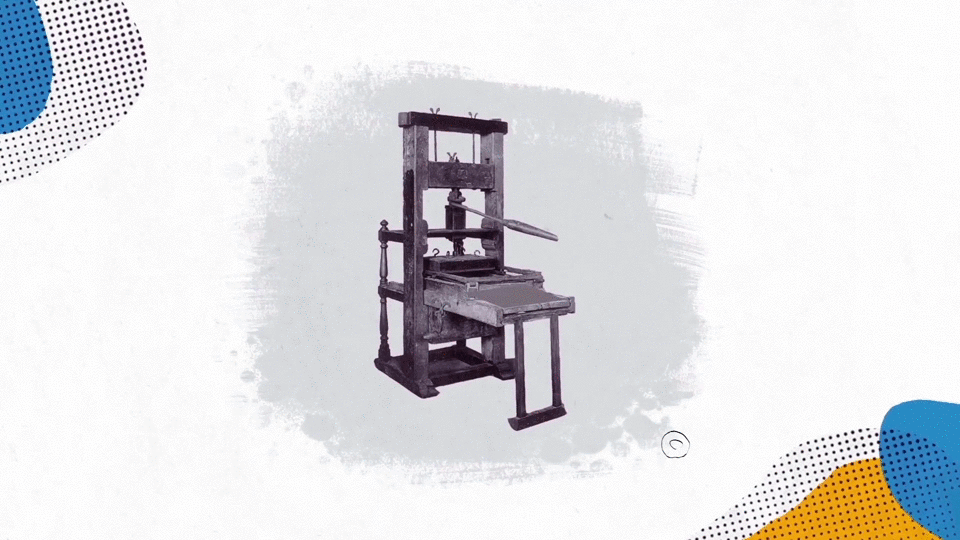
This project tries to show the impact of the printing press and how it introduced the era of mass communication, which permanently altered the structure of society, the relatively unrestricted circulation of information and revolutionary ideas transcended borders. Also, the way how an innovative idea broke the monopoly of the literate elite on education and learning and bolstered the emerging middle class.
The Printing Revolution occurred when the spread of the printing press facilitated the wide circulation of information and ideas, acting as an agent of change through the societies that it reached. This project goes through different steps of its evolution.

The printing press was also a factor in the establishment of a community of scientists who could easily communicate their discoveries through the establishment of widely disseminated scholarly journals, helping to bring on the scientific revolution.

The invention of mechanical movable type printing led to a huge increase of printing activities across Europe within only a few decades.
By 1500, the printing presses in operation throughout Western Europe had already produced more than twenty million copies. In the following century, their output rose tenfold to an estimated 150 to 200 million copies.

Because of the printing press, authorship became more meaningful and profitable. It was suddenly important who had said or written what, and what the precise formulation and time of composition was.

At the dawn of the Industrial Revolution, the mechanics of the hand-operated Gutenberg-style press were still essentially unchanged, although new materials in its construction, amongst other innovations, had gradually improved its printing efficiency.

In Germany, around 1440, goldsmith Johannes Gutenberg invented the movable-type printing press, which started the Printing Revolution. Modelled on the design of existing screw presses, a single Renaissance movable-type printing press could produce up to 3,600 pages per workday, compared to forty by hand-printing and a few by hand-copying.

Gutenberg's newly devised hand mould made possible the precise and rapid creation of metal movable type in large quantities. His two inventions, the hand mould and the movable-type printing press, together drastically reduced the cost of printing books and other documents in Europe, particularly for shorter print runs.

The rapid economic and socio-cultural development of late medieval society in Europe created favorable intellectual and technological conditions for Gutenberg's improved version of the printing press. The sharp rise of medieval learning and literacy amongst the middle class led to an increased demand for books which the time-consuming hand-copying method fell far short of accommodating.

Because the printing process ensured that the same information fell on the same pages, page numbering, tables of contents, and indices became common, though they previously had not been unknown.

The process of reading also changed, gradually moving over several centuries from oral readings to silent, private reading. Over the next 200 years, the wider availability of printed materials led to a dramatic rise in the adult literacy rate throughout Europe.

Thanks for watching







